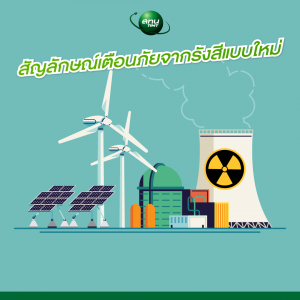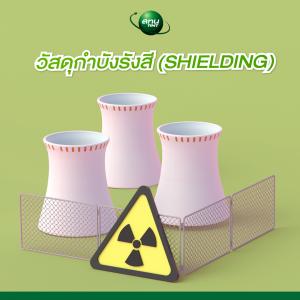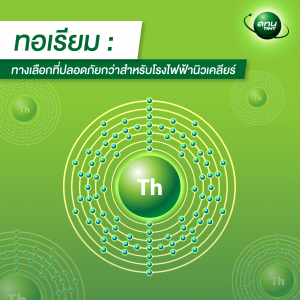จารุณีย์ ทองผาสุก
กลุ่มวิจัยและพัฒนานิวเคลียร์สถาบันเทคโนโลยีนิวเคลียร์แห่งชาติ (องค์การมหาชน)
Paracelsus กล่าวว่า “สารทุกชนิดจะเป็นยาพิษหรือยารักษา ขึ้นกับปริมาณที่ใช้” (All substances are poisons: There is none which is not a poison. The right dose differentiates a poison and a remedy. Paracelsus (1493-1541)) คำกล่าวนี้สามารถนำมาใช้ได้กับรังสีเช่นกัน
โดยทั่วไปเชื่อว่า รังสีมีแต่อันตรายต่อร่างกายมนุษย์ และอันตรายจากรังสีจะเป็นสัดส่วนกับปริมาณรังสี รังสีสูงก่อให้เกิดอันตรายมาก รังสีปริมาณต่ำก่อให้อันตรายน้อย

อย่างไรก็ดี ผลการศึกษาวิจัยในปัจจุบันแสดงว่ารังสีปริมาณต่ำ ๆ (1-50 cGy) นอกจากจะไม่เป็นอันตรายแล้ว ยังอาจเป็นประโยชน์ต่อสิ่งมีชีวิตด้วย1-5  พบว่า การได้รับรังสีปริมาณต่ำ ๆ จะทำให้เซลล์ทนต่อรังสีปริมาณสูงในครั้งต่อไปมากกว่าเซลล์ที่ไม่ได้รับรังสีปริมาณต่ำ ๆ มาก่อน6-7 นอกจากนี้ยังพบว่า รังสีเหนี่ยวนำให้เซลล์ผลิตสารต้านอนุมูลอิสระ เช่น manganese superoxidedismutase8-10 ซึ่งสารต้านอนุมูลอิสระชนิดนี้ สามารถลดอุบัติการณ์การเกิดโรคมะเร็ง (tumor suppressor gene)11-12 อย่างไรก็ดี ถึงแม้ผลงานวิจัยจำนวนมากจะบ่งว่ารังสีปริมาณน้อย ๆ เป็นประโยชน์ต่อร่างกาย แต่ก็ยังต้องการงานศึกษาวิจัยอีกมาก ก่อนที่จะมีการนำมาใช้ประโยชน์ หรือปรับเปลี่ยนกฎระเบียบทางด้านความปลอดภัยทางรังสี เอกสารอ้างอิง
พบว่า การได้รับรังสีปริมาณต่ำ ๆ จะทำให้เซลล์ทนต่อรังสีปริมาณสูงในครั้งต่อไปมากกว่าเซลล์ที่ไม่ได้รับรังสีปริมาณต่ำ ๆ มาก่อน6-7 นอกจากนี้ยังพบว่า รังสีเหนี่ยวนำให้เซลล์ผลิตสารต้านอนุมูลอิสระ เช่น manganese superoxidedismutase8-10 ซึ่งสารต้านอนุมูลอิสระชนิดนี้ สามารถลดอุบัติการณ์การเกิดโรคมะเร็ง (tumor suppressor gene)11-12 อย่างไรก็ดี ถึงแม้ผลงานวิจัยจำนวนมากจะบ่งว่ารังสีปริมาณน้อย ๆ เป็นประโยชน์ต่อร่างกาย แต่ก็ยังต้องการงานศึกษาวิจัยอีกมาก ก่อนที่จะมีการนำมาใช้ประโยชน์ หรือปรับเปลี่ยนกฎระเบียบทางด้านความปลอดภัยทางรังสี เอกสารอ้างอิง
|
เอกสารอ้างอิง |
|






